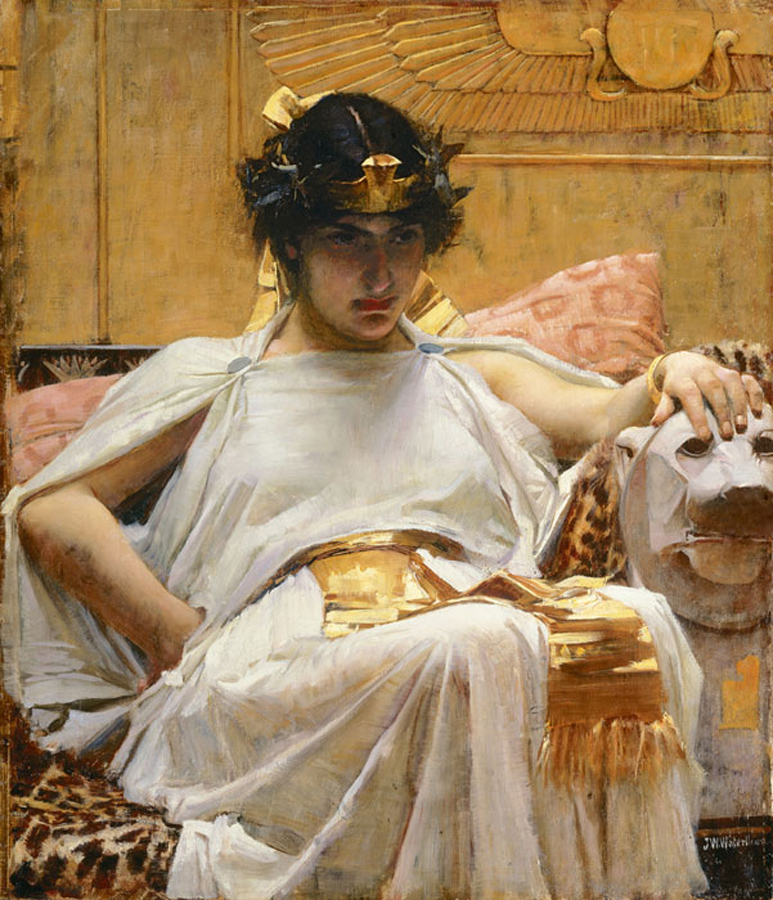John William Waterhouse, Cleopatra, 1888
22.4x25.7 in.
John William Waterhouse (1849-1917) was an English painter who worked in the Pre-Raphaelite style, although he worked decades after the movement was formed. The style was still popular when Waterhouse worked, but he was considered somewhat old-fashioned, despite his success. Waterhouse was best known for his scenes of Greek mythology and Arthurian legend, but he also did a number of paintings of Roman history. This piece is a fascinating portrayal of Cleopatra. Always a woman of mystery in the Western imagination, it has never been completely agreed upon whether Cleopatra was more alluring due to her beauty or her brilliance. Waterhouse has managed to completely intertwine the two traits. He depicts a woman of great intensity and power, and her intelligence and sexuality are both on display here. Cleopatra reclines among her fineries, revealing little skin, but displaying her body seductively nonetheless. However the center of the painting is undoubtedly her eyes. The energy that exudes from Cleopatra's expression is palpable; she almost looks aggressive, yet entirely captivating. It is difficult to look away from her face. Waterhouse's handling of paint is quite diverse and effective. He carefully shaded Cleopatra's skin and delicately rendered her hair, but uses rough, broad strokes on the wall and belt, successfully conveying the texture of the gold. There is also duality in Cleopatra's pose–one hand rests on the lion statue while the other bends at her waist, looking impatient and agitated, lending another dimension to her expression. Although Cleopatra's thoughts and the meaning of her countenance are hard to discern, she is clearly (and rightly) shown as a woman of great force and authority. What has ultimately endured over more than two thousand years is the immense power and allure of the last Pharaoh.

Cool. Just re-discovered Waterhouse after the recent controversies over his depictions of women, and after looking him up discovered this image and your commentary, which is a bit of an antidote to the extreme of an opposing view. He is not one-dimensional and depicted women in more than one way, at very least.
ReplyDelete